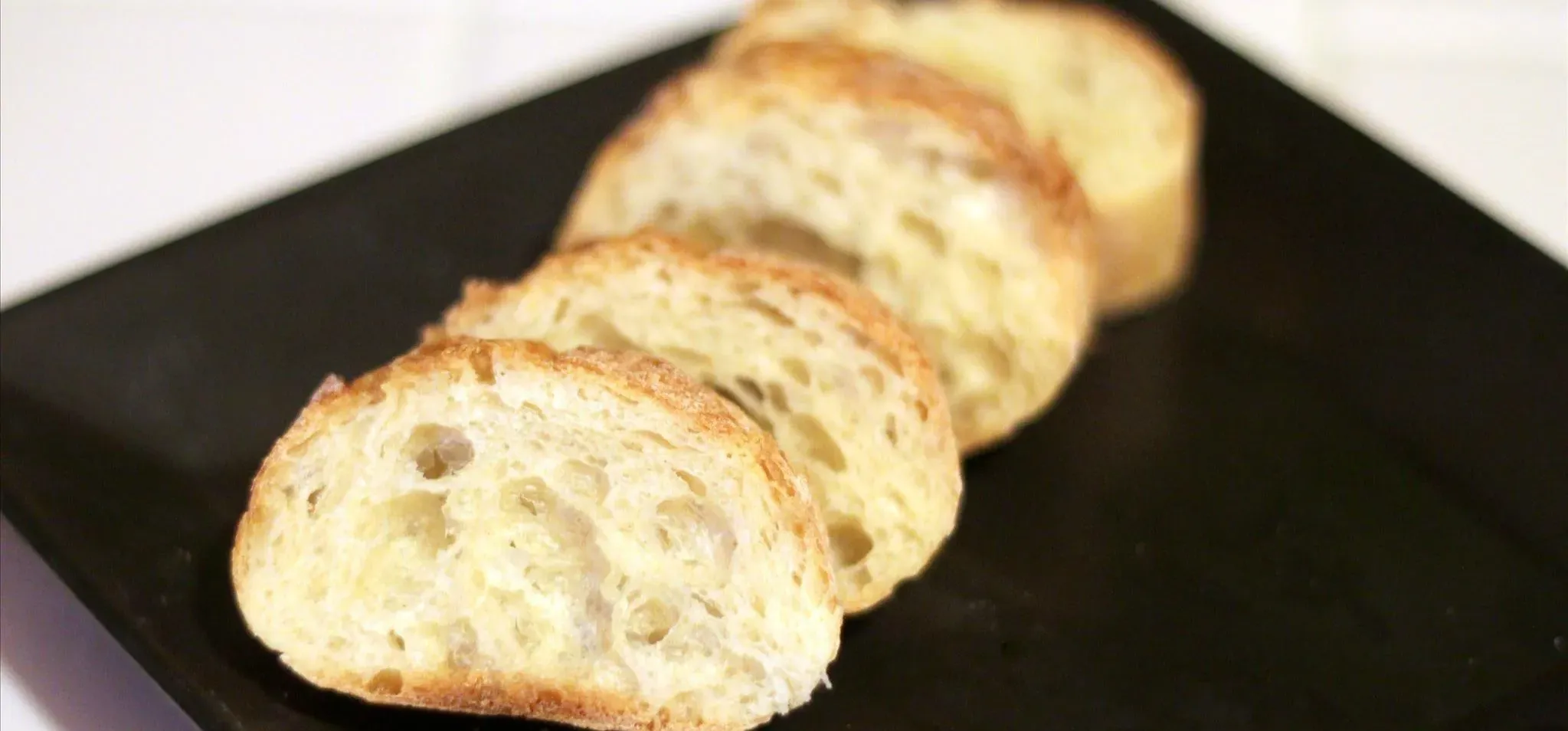Everyone talks about how great sliced bread is, but there's nothing better than the taste of a just-baked loaf of crusty French bread. Like most beautiful things in life, however, the beauty of the baguette doesn't last. The next day, it's rock-hard and good for very little except for croutons or breadcrumbs. But there is a trick to make it taste fresh again.
When my editor asked me to try out this food hack, I was more than a little skeptical. I love bread, so I didn't think there would be a miraculous reviving trick I didn't already know. But this water-soaking method works really well, and I tried it with three different stale loaves of bread.
The most stale loaf, the one pictured here, was also already cut and over two days old. So I know this method works, and it's a game-changer! (You can check out the original tip here.)
Run your stale bread under running water
Don't be shy here. Put your water on full force and get the crust completely wet. If you are reviving a cut baguette, concentrate most of the water stream on the crust. But it really doesn't matter if the cut side also gets wet.

Wrap your wet baguette in aluminum foil
Use a generous amount of aluminum foil to wrap up your soaked baguette.

Place your wrapped baguette in a cold oven
Don't preheat your oven. Place your wrapped bread in a cold oven or toaster oven and turn it on to 300°F.

Heat your baguette for 10–12 minutes
For a full baguette, heat it for 12 minutes. For a half or partial loaf, heat it for 10 minutes. After the allotted time, remove your loaf and unwrap it. If you press it, you'll see it's now soft. According to Bon Appétit, the water and being wrapped in foil help to steam the bread back to life.

Heat your uncovered baguette for 4–5 minutes
Return the bread to the oven and heat uncovered for an additional 4–5 minutes. This step makes the baguette nice and crusty again.

Enjoy!
And be amazed at how your rock-hard baguette has come back to life as a "fresh" loaf.

Eat within 15–20 minutes
Revived bread has a much shorter shelf life than freshly baked bread. Enjoy your now-delicious bread, but don't expect it to last much longer than half an hour. Revived baguettes start hardening quickly and will return to their hardened form.
Get more life-changing bread tricks
Learn how to make stale cookies fresh again with a slice of bread, or how to always get the freshest loaf of bread at the grocery store. And if you're a lazy cook, you can actually make bread in a rice cooker!
Photos by Naomi Imatome-Yun/Food Hacks.

























Comments
Be the first, drop a comment!